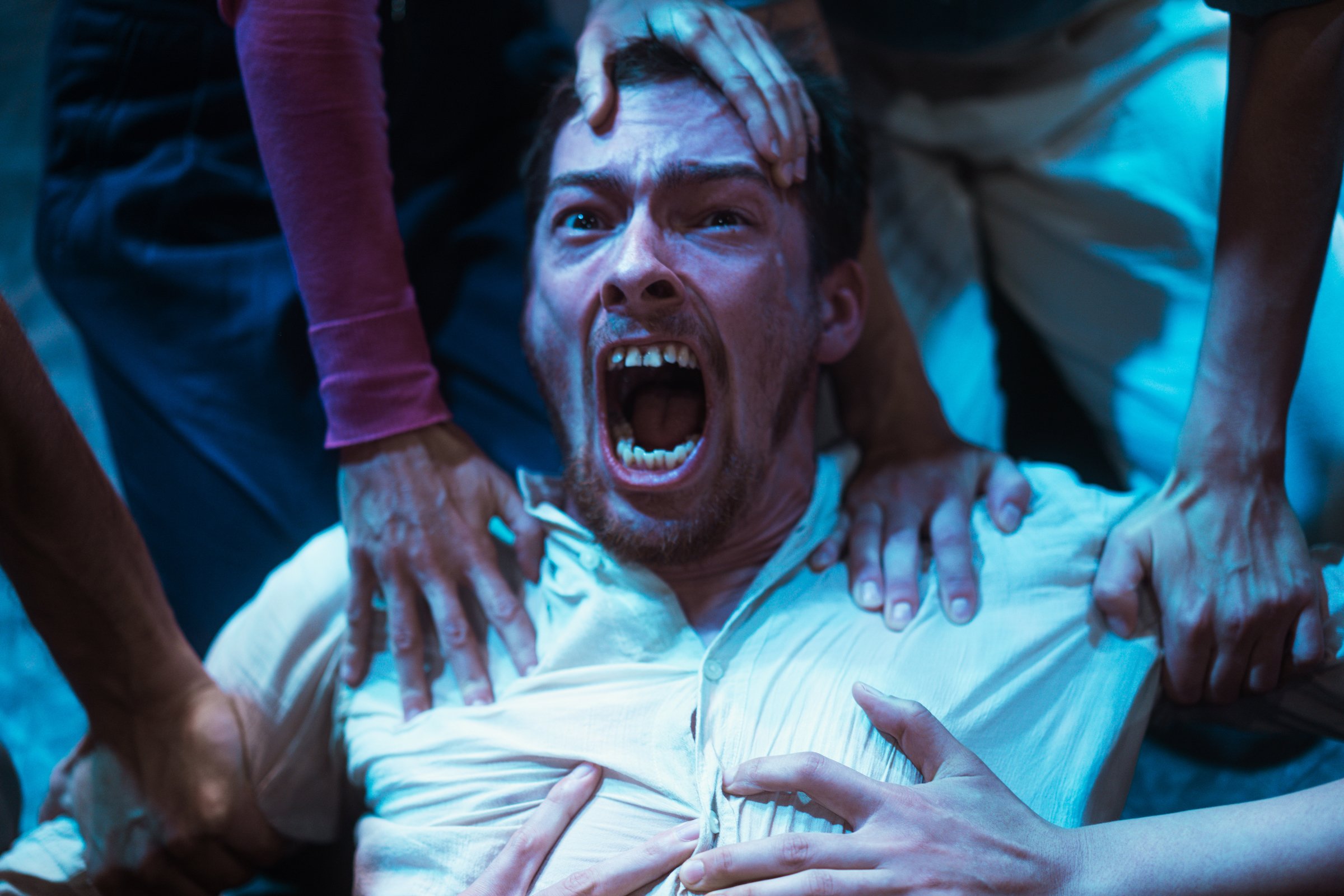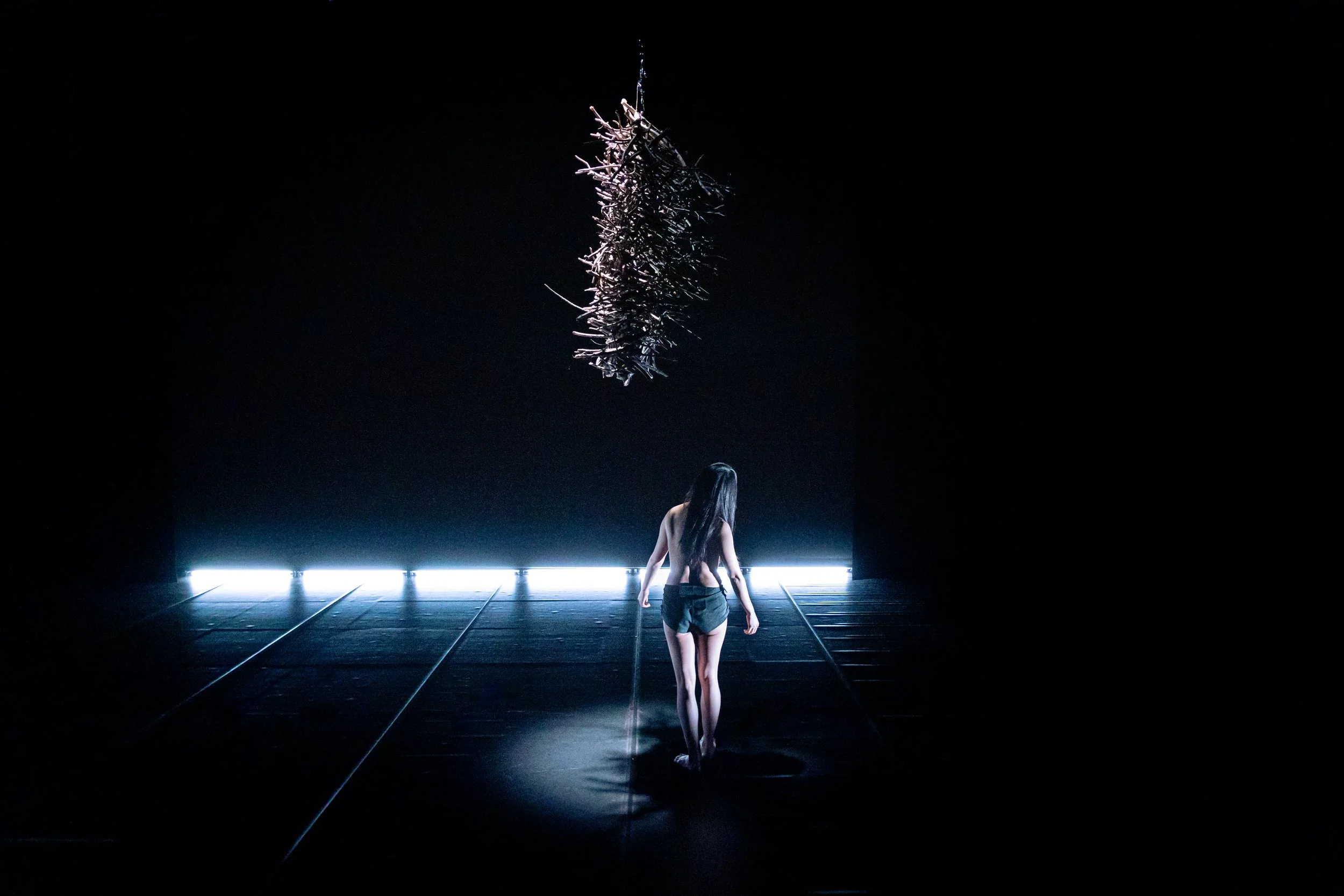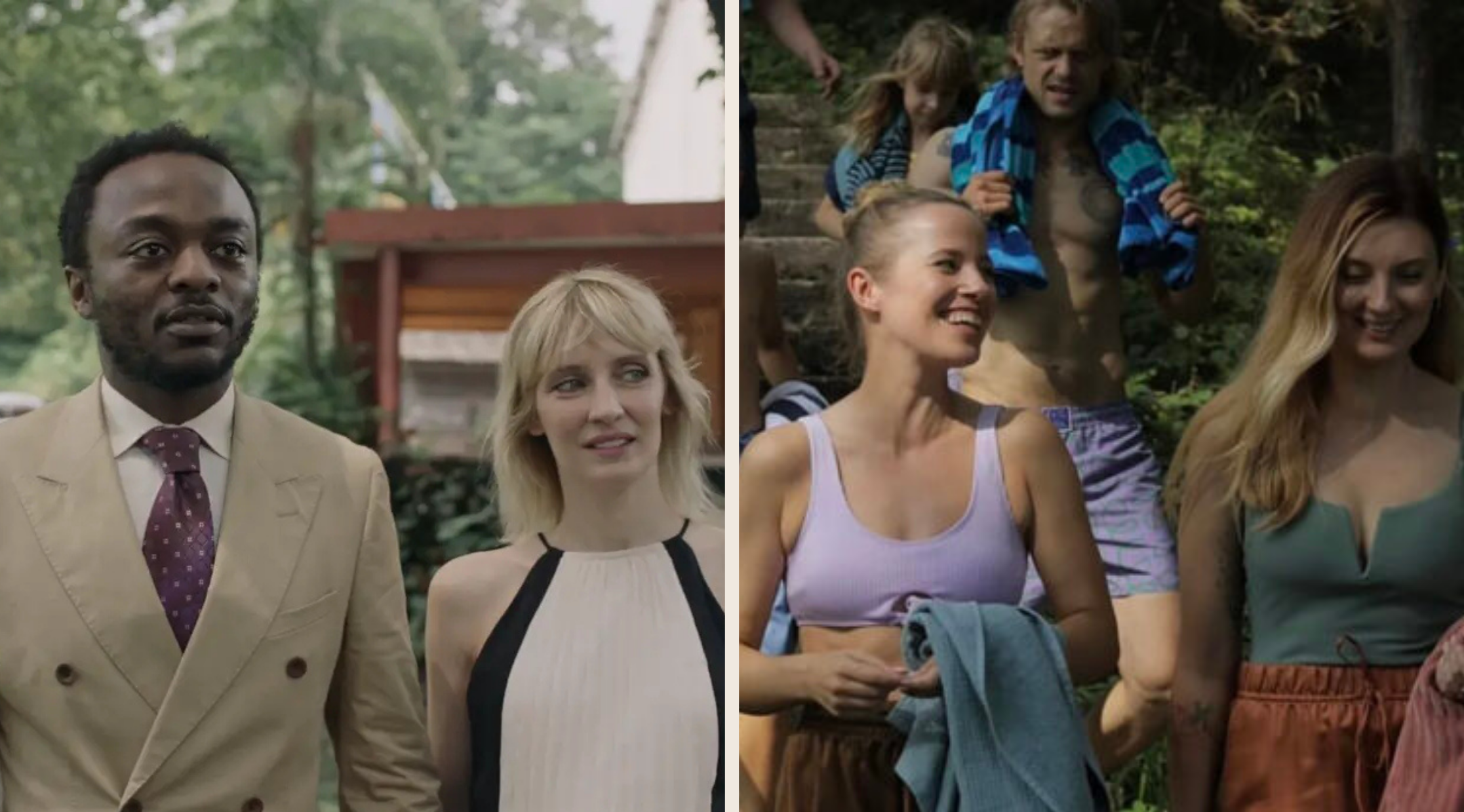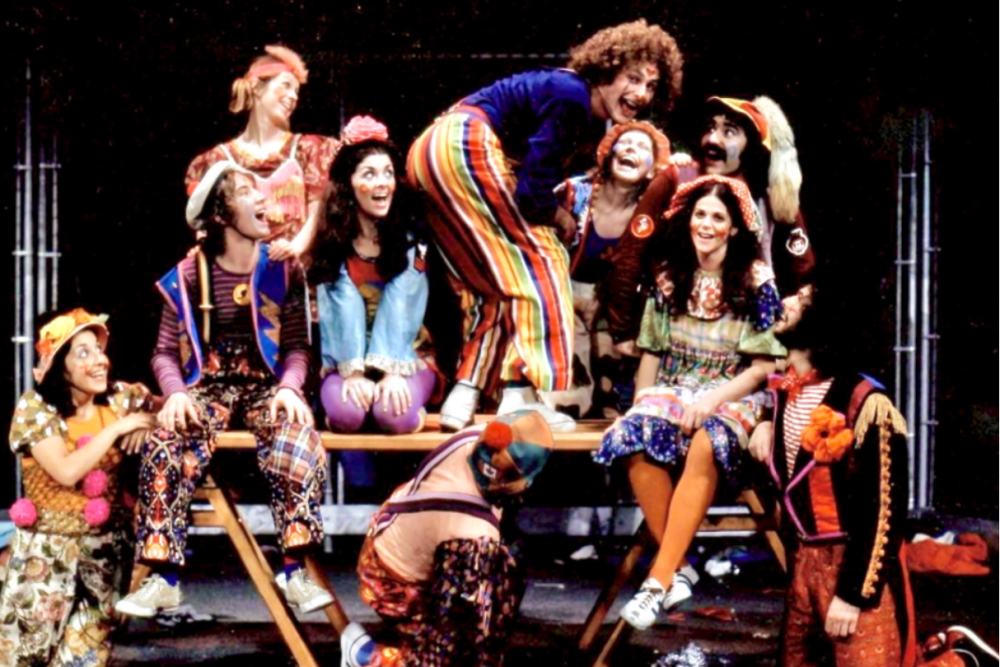Dance reviews: Killer clowns, an intense look into the void, and a warm embrace
Arresting dancers in Hofesh Schechter’s Double Murder, and an immersive multimedia universe at Forêt
Helping hands meet distress in Hofesh Schechter Company’s The Fix, part of the Double Murder bill. Photo by Todd MacDonald
Compagnie d’Autres Cordes’ Forêt blends the natural and supernatural. Photo by Quentin Chevrier
DanceHouse presents Hofesh Schechter Company’s Double Murder at the Vancouver Playhouse to October 22; the Dance Centre presents Compagnie d’Autres Cordes’ Forêt at the Scotiabank Dance Centre until October 22
AS MUCH AS dance fans have enjoyed the return to live performances again, there’s been a dearth of touring shows from around the world. That has changed dramatically this week, with two bold looks at the international cutting edge on offer.
On the DanceHouse program, Israeli-born U.K. sensation Hofesh Shechter returns in cheeky form with a double bill that mixes dazzling dance with contrasting works—one blackly comic, the other a warm embrace. Over at the Dance Centre, meanwhile, French composer and interdisciplinary artist Franck Vigroux is blowing the ceiling off the Faris Studio Theatre with Forêt, complete with gigantic waves of sound, immersive projections, and artful set pieces.
Both feature artists who are fearless; who compose their own atmospheric scores; and who take you to places that are alternately uncomfortable and transcendent.
In Double Murder, Shechter’s company of honed, charismatic dancers, hand-picked from around the globe, has never looked more impressive. That’s most obvious in the first piece, Clowns, where characters with waving show-biz hands and rubbery arms and spines shuffle along to an ever-driving, relentlessly percussive score. One minute they’re crossing the stage in an upright folk-jig chorus line, the next they’re hunched and lunging like ogres. Oh, and the next, they’re slitting throats, garotting necks, or finger-shooting people in the head.
It becomes clear that these sinister jesters are wooing us, mesmerizing us, and entertaining us—building a surreal and macabre critique on the way we’re numbed by violence. Shechter seems to be saying something about mob rules, too: watch his clever use of space, the way the dancers regroup, thrusting their arms in the air in an ecstatic mosh pit before spreading out to caper across the stage again. Props go to Shechter’s lighting and set designer Tom Visser, who creates cinematic blackouts and startling “jump cuts”. Cool tricks include turning the back curtain into circus-ring red with the flip of a switch. In a brilliant extended punchline, the choreographer even pushes the joke beyond the curtain call. It’s a treat, but one with a beautifully bitter aftertaste.
For fans of Shechter, that jet-black humour will be less surprising than the piece that follows it. Double Murder’s The Fix, which the artist has described as an “antidote” to Clowns, is an earnest exercise in human connection.
Though the piece was created just before COVID hit, you can’t help but read its messages as a cozy reassurance in these unmoored post-pandemic days.
The piece opens with a tangle of dancers struggling to get their footing, fighting to stay together and support each other. In whimsical interludes they gather around a mock-campfire guitar player and then settle into the lotus position, yoga-meditating against a cacophonous world—represented by Shechter’s deafening drone score. The most arresting moment in The Fix comes with a darker tinge, though: a man flails and struggles on the floor, the group’s hands not so much holding him down but calming him against his journey into the long dark night. It’s a look into mortality that’s spine-chilling in this “Kumbaya” context.
The Fix doesn’t have the alluring edge of Clowns, but that’s kind of the point. By the end, the cast is unabashedly hugging each other, and then offers the audience an act of generosity and affection that even this jaded critic found surprisingly disarming and moving. Those who abhor audience participation needn’t worry: suffice it to say that if you need a hug—and who doesn’t right now?—The Fix has the fix for that.
Forêt. Photo by Quentin Chevrier
OVER AT THE SCOTIABANK Dance Centre, Compagnie d’Autres Cordes’ multidisciplinary Forêt builds a sensorial universe that’s almost overwhelming in the intimate Faris Studio space.
Vigroux melds a live-performed, synth-heavy electronic soundscape with hallucinatory animated video projections (generative video by Antoine Schmitt, prerecorded video by Kurt d’Haeseleer), and slow, mesmerizing dance by Nina Berclaz.
The imagery, which by turns conjures black holes, galaxies, and primal microbes, is spread across transparent screens that fill the proscenium.
Anyone sitting in the first few rows should tighten their seatbelt for a legit trip.
A primordial mist rises from the stage to reveal a dancer emerging slowly from a pile of sticks, clicking wood sounds echoing ominously through the soundscape. The half-nude creature sometimes wears those sticks like a spiky armour, or sends bundles of them (through the magic of stagecraft) hovering into the air. She occasionally appears shamanistic, connecting with the cosmos and, in the finale, the glowing lights of a Space Odyssey-like god.
The possible interpretations are limitless. Vigroux has clever, associative, and wildly open-ended things to say about the primal, the spiritual, and the technological. In many ways, he’s inviting us to stare into the void.
Electronic-music fans should note the piece feels as much like a hallucinatory concert as a dance piece. However you wish to categorize it, the experience is intense, as sound and galaxies of light wash over you.
Like Shechter's work, you may need a warm hug afterwards.















